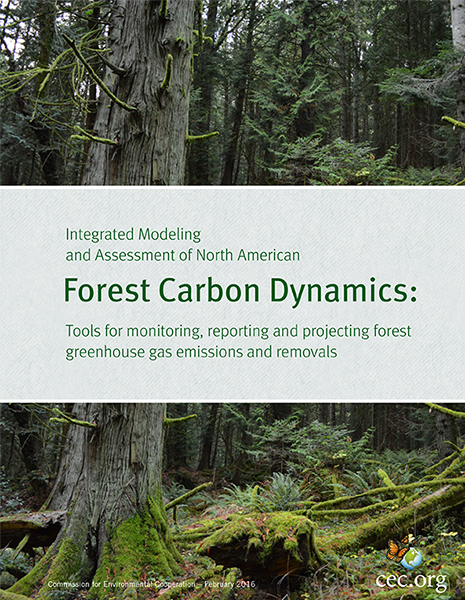Integrated Modeling and Assessment of North American Forest Carbon Dynamics
Tools for monitoring, reporting and projecting forest greenhouse gas emissions and removals
Integrated Modeling and Assessment of North American Forest Carbon Dynamics
Tools for monitoring, reporting and projecting forest greenhouse gas emissions and removals
Description
The forests of North America play an important role in the global greenhouse gas balance by removing carbon dioxide from the atmosphere, storing it in forest ecosystems and in products manufactured from harvested wood, and providing society with wood for construction, energy and other uses. The objective of this project was to improve and harmonize methods for assessing changes in carbon stocks and causes of change, among the three countries of North America, and to develop tools for the estimation, reporting and projection of past and future forest greenhouse gas balances as affected by natural disturbances, forest management, and land-use change.
Such information lays the foundation for the development and quantification of policies and activities aimed at reducing carbon emissions and at enhancing carbon removal from the atmosphere by forests. Examples of such policies include the reduction of emissions from deforestation and forest degradation through sustainable forest management. A focus of this project was the demonstration and testing of computer models for the integrating of data from many different sources, such as forest inventories, ground plot measurements, and remotely-sensed time series of land cover and land-cover change. Two models, the Carbon Budget Model of the Canadian Forest Sector (CBM-CFS3) and the Forest DeNitrification-DeComposition model (DNDC) have been used in three representative landscapes (Yucatan Peninsula, Mexico; Nez Perce–Clearwater National Forest, US; and the Prince George region, Canada) to analyze past and future carbon budgets. The results of this study describe how different remotely-sensed data and processing algorithms affect the mapping and quantification of areas affected by activities such as natural disturbances and harvesting; how to use spatially referenced and spatially explicit data to drive the CBM-CFS3 model; and the capabilities of different models to assess the impacts of various disturbances on productivity and carbon stocks; as well as highlight the basic requirements for using models in assessments of carbon stocks, and make recommendations for future work based on the lessons learned in this project. The Commision for Environmental Cooperation (CEC) has coordinated and partially funded this collaborative project of scientists in Canada, Mexico and the US, involving the three national forest services, other agencies, and universities.
Additional Information
